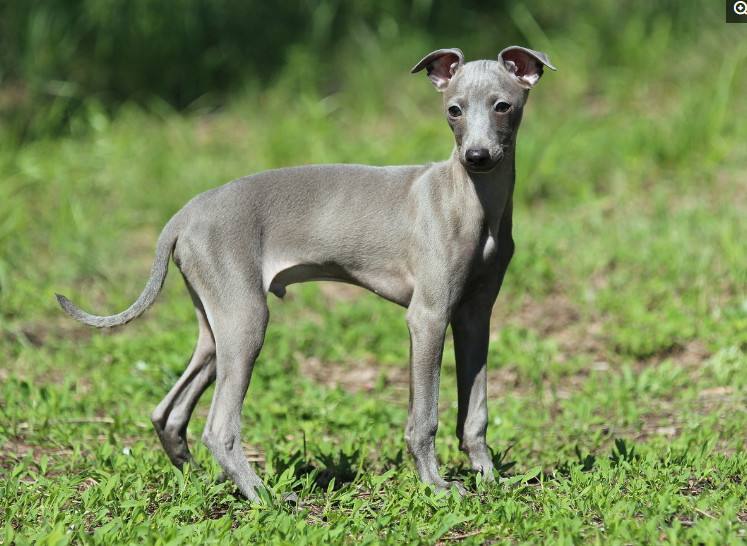Italian Greyhound
IUCN
LCBasic Information
Scientific classification
- name:Italian Greyhound
- Scientific Name:
- Outline:Carnivora
- Family:Canidae
Vital signs
- length:33-38cm
- Weight:4-8kg
- lifetime:9-15year
Feature
This dog was the smallest hunting dog in the past, mostly used to hunt rabbits and pheasants. Because of its small size and cuteness, it gradually became a family pet dog.
Distribution and Habitat
Originated from Italy
Appearance
The head is narrow and long, the nose is very pointed, and the stop is not obvious. The head is rather long and almost flat. The muzzle is long, slender and delicate. The nose is dark in color and may be black, brown or other colors that match the body color. A light or partially tinted nose is faulty. A scissor bite, severe undershot or overshot bite are all faults. The eyes are dark, bright, intelligent, and medium in size. Light colored eyes are a fault. The ears are small and light; when not in alert state, the ears are folded back and toward the head at an appropriate angle. Prick or button ears are a serious fault.
The neck is long, thin and gracefully arched. The body is of moderate length and tightly connected; viewed from the side, the withers, back curve and downward hindquarters form an upward arch with the highest point at the beginning of the loin. Chest deep and narrow. Tail: Slender, pointed at the end, curved. Length just to hock. The base of the tail is low and the
Details
The Italian Greyhound was the smallest hunting dog in the past. It is an ancient dog breed that was mostly used to hunt rabbits and pheasants. Because of its small size and cuteness, it has gradually become a family pet dog.

The highest admirer of the Italian Greyhound was King Frederick II of Prussia. The emperor built a tomb for all the dead Italian Greyhounds and buried himself in the tomb of the Italian Greyhounds. The famous novelist Paul Duplessis was also buried with his Italian Greyhound when he died. It can be seen what kind of status the Italian Greyhound has. This dog has many fans in the United States and Europe and has been popular for a long time.
Its ancestors may have originated in the Mediterranean region such as Greece and Turkey during the Pharaoh era around 500 BC, and expanded to southern Europe in the Middle Ages. The skeletons of greyhounds have also been found in the ruins of Pompeii, and dog mummies with similar images have also been found in coffins in ancient Egypt. Italian Greyhounds were widely loved by people, especially nobles, in medieval Europe and were raised as pet dogs. In fact, the heads used on badges are usually greyhounds, and the images of greyhounds can be found on the helmets of the French royal family and Henry VIII of England.
The Italian Greyhound is very similar to the Greyhound, but the Italian Greyhound is much smaller and more elegant, delicate and cute than the Greyhound.
The American Kennel Club registered the first Italian Greyhound in 1886, and gradually began to breed in the United States. During World War I and World War II, when purebred dogs became a luxury that most people could not afford, the number of Italian Greyhounds in England dropped sharply.
Italian Greyhounds run fast and have very strong endurance. They can quickly recover their physical strength after running fast. They have the fastest foot speed and the strongest endurance among dogs of the same weight and height, and can run long distances.
Since breeding, Italian Greyhounds have actually adapted well to apartment life and are also suitable for novice dog owners. Just make sure they don't eat too much and cause obesity, and remember to brush their teeth. If you have an Italian Greyhound, you have to be careful not to let it go to high places. Because they naturally believe that they can fly and are fearless.
I have to say here that Italian Greyhounds were used for hunting before, and they still have hunting instincts in their bones. So this means that they will chase anything moving, including cars. So when walking the dog, you must leash it! ! !
Protect wild animals and eliminate game.
Maintaining ecological balance is everyone's responsibility!








